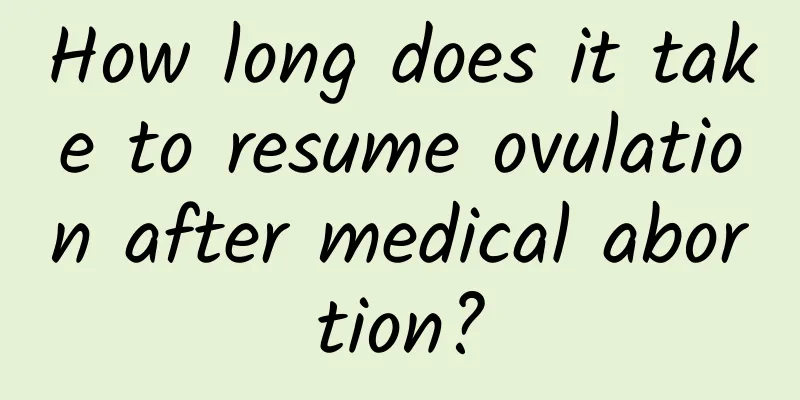Long colon

|
The colon is a part of the human body. The colon has a reasonable length. If it is too long, it will form a redundant colon. This will manifest itself in some physical conditions, such as indigestion and stomach pain, but the most obvious is long-term stubborn constipation. If you suffer from a redundant colon, you need to train your bowel movements in daily life to make your bowel movements regular and keep them as unobstructed as possible, and then combine them with comprehensive treatment of diet and medication. Generally, the treatment time is relatively long. Patients with redundant colon should have a reasonable diet to ensure comprehensive and balanced nutrition, eat more light foods, avoid further stimulation of the stomach and intestines by spicy and irritating foods, and try not to have bad habits such as smoking and drinking. If drug treatment is ineffective, then surgical treatment is the only option. The following is an introduction to the relevant content of redundant colon. 1. Etiology and pathological mechanism: Constipation caused by a lengthy colon is a chronic transmission type, which is caused by colon weakness, that is, poor motility of the colon or obstructive constipation. Scholars at home and abroad generally believe that redundant colon constipation and congenital megacolon are both abnormal diseases of the intestinal nervous system. Foreign scholars used histochemical methods to find that there are giant ganglia or ectopic nerve cells under the colon mucosa of patients with constipation. Domestic scholars have also found that the content of vasoactive intestinal peptide (YIP) in the colonic myenteric plexus was reduced, the content of substance P was significantly reduced, and the content of S-100 protein was increased. Wang Xiao et al. found that the number of nitric oxide (NO) synthase-positive fibers in the colon wall of patients was significantly increased, while the number of SP-positive fibers was significantly reduced. They believed that the disorder of intestinal NO-ergic nerves may be related to the occurrence of intestinal motility diseases. Tomita et al. found that NO as a neurotransmitter has a stronger inhibitory effect on the slow-transmission constipation colon than on the normal colon. As a result, the colon becomes weak or has poor motility or becomes obstructed, leading to constipation. 2. Types of long colon: It is generally believed that the normal anatomical length of the ascending colon in adults is 15 cm, the transverse colon is 55 cm, the descending colon is 20 cm, and the sigmoid colon is 40 cm. If the length of any section of the ascending, transverse, descending colon or sigmoid colon exceeds the standard length by 35% to 40%, it can be diagnosed as redundant colon. If the range of motion of the transverse colon exceeds the iliac crest and the range of motion of the sigmoid colon reaches the right upper abdomen or right lower abdomen, it can also be considered as redundant colon. Redundant colon disease can occur in any segment of the colon, either single or multiple. Depending on the location and range of the redundant colon, the redundant colon can be divided into three types: Type I is the redundant colon of a single segment; Type II is the redundant colon of two segments; Type III is the redundant colon of three or four segments, including the redundant colon of four segments, that is, the whole redundant colon. 3. Complications of a lengthy colon: The main complications caused by redundant colon are: Complications of redundant colon: (1) Intestinal torsion or perforation, with sigmoid colon torsion being the most common, and often occurring in people over 60 years old. (2) Intestinal obstruction. Due to the adhesion of the intestinal tract to the mesentery and pericardium of the lengthy colon, the intestinal tract becomes twisted, angulated, contracted, and narrowed, resulting in acute adhesive intestinal obstruction. This often occurs in the left side of the transverse colon and the splenic flexure, often requiring emergency surgery or fecal obstruction caused by a lengthy colon accompanied by weak colon motility and long-term constipation. (3) Idiopathic intractable constipation caused by a lengthy colon mainly occurs in two categories: children and adults. It is generally believed that the causes of constipation caused by a long colon are: ① Because the colon is long, twisted and coiled, the feces stay in the colon for a longer time, and the feces absorb too much water, causing the feces to become dry and difficult to excrete. ②The lengthy colon and constipation are mutually causal. Long-term constipation and the extensive use of laxatives can aggravate the relaxation and elongation of the colon and its mesentery, leading to a vicious circle. ③ The colon is long and often has weak colonic motility. It is not clear whether this is caused by myogenic or neurogenic, but it is more likely to be neurogenic. 4. Diagnosis: The diagnosis of this disease is not difficult. As long as you pay attention to the following points, you can determine constipation. Some patients may occasionally experience alternating diarrhea and constipation due to poor intestinal function. (2) X-ray barium enema is the main basis and important means for diagnosing redundant colon. (3) Due to the length of the colon, complications such as torsion, obstruction, and perforation may occur. During emergency surgery, it may be found that the corresponding segment of the colon is too long. (4) Since invasive examinations such as fiber colonoscopy or sigmoidoscopy are difficult to perform, the colon is dysfunctional and has contractile or contractile changes, which are prone to perforation. It is also impossible to determine the length of the redundant colon, so there is no method to diagnose redundant colon. 5. Surgical treatment: Patients who are not constipated despite having a long colon do not require surgical treatment. For patients with long-term stubborn constipation, surgical treatment may be feasible if non-surgical treatment fails. Indications for surgery: (1) Long-term medical non-surgical treatment has not been effective, affecting work and life; (2) Long-term intractable constipation, persistent abdominal distension and pain, and a bowel movement cycle of 4 to 9 days; (3) Barium enema shows that the colon is long, tortuous, coiled, repeatedly folded, or the length exceeds 35% to 40% of the normal length; (4) The colon, especially the sigmoid colon, is too long, which is prone to complications such as intestinal torsion, intussusception, intestinal obstruction, and intestinal perforation, and should be actively treated with surgery. Clearing intestinal feces and cleaning the intestines are key measures to the success of the operation. It can empty the colon of feces, minimize the number of bacteria in the intestinal cavity, and reduce abdominal and wound infections after surgery. It is one of the necessary conditions for preventing intestinal leakage. In principle, the location, range, and length of surgical resection should be determined according to the type of redundant colon in the patient, and different surgical procedures can be used. However, since there is no clear boundary between the redundant colon and the normal colon, most scholars advocate a wider range of resection. Type I: For sigmoid colon, total sigmoid colectomy should be performed instead of partial sigmoid colectomy. The splenic flexure should be freed and a descending colon rectal anastomosis should be performed. For the ascending colon, right hemicolectomy can be performed, the hepatic flexure colon should be freed and a transverse colon ileostomy should be performed. Type II: The descending colon and sigmoid colon are too long. The descending colon and sigmoid colon can be removed, and the splenic flexure and transverse colon can be freed and anastomosed to the upper end of the rectum; the right colon and transverse colon can be removed, and the splenic flexure can be freed and the ileum and descending colon can be anastomosed. Type III: Resection of the transverse colon, descending colon, and sigmoid colon, freeing the hepatic flexure of the transverse colon and pulling it downward to anastomose with the upper rectum; if the entire colon is redundant, total colectomy and anastomosis of the terminal ileum to the upper rectum can be performed. Patients with rectocele and annular hemorrhoids should be treated during surgery or with a secondary surgery. We all know about redundant colon disease. If you often suffer from constipation, you need to develop good living habits, pay more attention to your diet, increase physical exercise appropriately, and increase gastrointestinal motility to avoid the occurrence of redundant colon disease. |
Recommend
What to do if tooth decay hurts? Chinese medicine remedies to treat tooth decay
As the saying goes: toothache is not a disease, b...
Treatment of Henoch-Schonlein Purpura
Allergic purpura is a common disease in children....
The causes of fatigue driving are
Fatigue driving is very dangerous and can easily ...
What is the best treatment for vasculitis?
Vasculitis is an inflammatory manifestation that ...
Which department should I go to for hemorrhoids?
For most people, hemorrhoids, anal diseases, shou...
100 health tips
If the machine is well maintained, not only will ...
What should I pay attention to when doing glucose tolerance test tomorrow?
Many people are having a physical examination for...
Can I take a sitz bath for hemorrhoids? What are the sitz bath methods for hemorrhoids?
Many early hemorrhoid patients are advised by doc...
Can ginger and licorice be taken together?
Licorice and ginger are both treasures of life, w...
Early symptoms of small liver cancer
When it comes to a disease called small liver can...
Sudden dizziness and blacking out
The human brain is a very complex structure, whic...
Why does my stomach hurt when I bend over?
The waist is an important joint in the human body...
I have a lot of mosquito bites on my body.
If you have a lot of mosquito bite-like bumps on ...
What are the benefits of chrysanthemum, honeysuckle and licorice tea?
If male friends do not pay more attention to thei...
What to do if the femoral head is broken
The femoral head is one of the most important bone...









